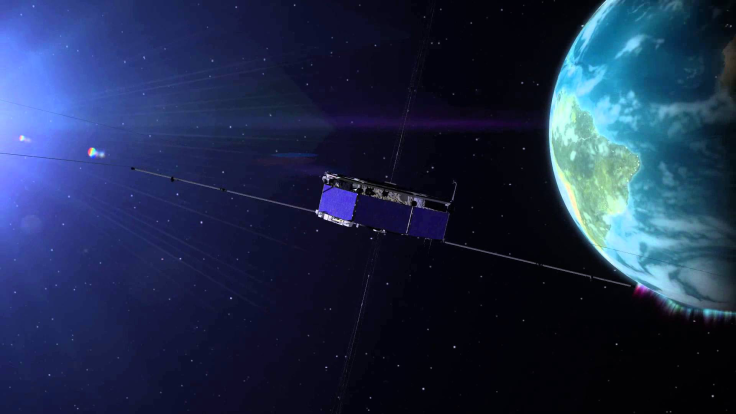NASA’s Magnetospheric Multiscale Mission Satellites Break High Altitude GPS Fix World Record

Just over a month after it achieved the closest separation ever of any multispacecraft formation, NASA’s Magnetospheric Multiscale (MMS) mission has broken a new record. The mission now holds the Guinness World Record for the highest altitude fix of a GPS signal.
The four MMS spacecraft, which are currently locked in a highly elliptical orbit around Earth to study the planet’s magnetosphere, set the record at an altitude of 43,500 miles, NASA said in a statement released Thursday.
“The four MMS spacecraft incorporate GPS measurements into their precise tracking systems, which require extremely sensitive position and orbit calculations to guide tight flying formations,” the space agency said, adding that precise GPS tracking allows the satellites to maintain a tight formation needed for high resolution three-dimensional observations.
The MMS mission began with the launch of four identical satellites on March 12, 2015. The primary goal of the mission is to investigate a scarcely understood phenomenon called magnetic reconnection, which can link the sun’s magnetic field lines to Earth’s, funneling material and energy from the sun into Earth’s magnetic environment.
Scientists believe magnetic reconnection is one of the key ways material is energized in space, and it plays a crucial role in the creation of auroras on Earth, flares on the surface of the sun, and even in processes taking place in the vicinity of black holes and neutron stars.
In September, the four MMS spacecraft began flying at a distance of just four-and-a-half miles apart — the closest separation ever achieved in any multispacecraft mission.
“The four MMS spacecraft fly in a pyramid shape, with one satellite marking each corner. This shape, called a tetrahedron, allows MMS to capture three-dimensional observations of magnetic reconnection – critical for fully understanding this process,” NASA said in a statement released at the time.
© Copyright IBTimes 2025. All rights reserved.




















